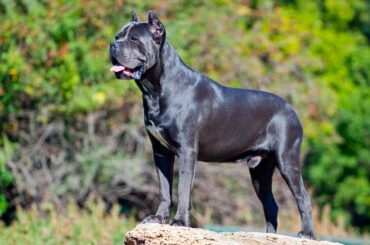The Piebald German Shepherd is another name for the Panda German Shepherd. The name “piebald” refers to an animal’s coat having an uneven pattern made up of two colors, usually black and white, like the Piebald horse. Panda German Shepherds are non-white German Shepherd dogs with a rare genetic abnormality that creates white spotting. The Panda Shepherd Dog is a piebald German Shepherd that only exists in one bloodline.
Ms. Cindy, the founder of the breeding program, took the piebald puppy to the Ohio State University Veterinary Hospital for genetic DNA testing to determine the specific source of the aberration. The pups’ parents were determined to be purebred GSDs with no White GSD or other breeds in their pedigree. This was a purebred GSD with piebald coloring at birth. The piebald puppy’s sire and dam were bred three more times and produced three more puppies. and the puppies were all born with the classic black and tan coloration.

On the piebald puppy Frankie, a lot of canine genetic coat color testing was done. Frankie was bred to a black and tan GSD when she reached maturity. Three of the four puppies born had black/tan/white coats but no blue eyes, while the fourth youngster had the more conventional black and tan coloration. Panda German Shepherds were given to the black/tan/white German Shepherd Dogs.
The Panda German Shepherd is a purebred German Shepherd with a KIT gene mutation that causes its coat to be black and white rather than the traditional black and tan German Shepherd hues. Despite being purebred, the AKC does not recognize the Panda German Shepherd because its white markings are deemed defects.
Table of Contents
Panda German Shepherd Body Characteristics
The Panda German Shepherd has a light, robust bone structure and a powerful, muscular, slightly extended body. The head should be proportionate to its body, with a slightly rounded forehead. The nose is usually black, however blue or liver can appear on occasion, but they are considered flaws and cannot be displayed. In a forceful scissors bite, the teeth connect. The almond-shaped dark eyes are never projecting. The ears are sharp, erect, and turned forward, with a wide base.
Panda German Shepherd Puppies under the age of six months may have their ears drop somewhat. When the dog is at rest, the bushy tail reaches almost to the hocks and hangs down. The thighs are thick and sturdy, and the front legs and shoulders are powerful. Males are 24 – 26 inches tall (60 – 65 cm) while girls are 22 – 24 inches tall (55 – 60 cm), with a weight of 77 – 85 pounds (35 – 40 kg). It is 35% white, with the rest of the coloration being black and tan. It is a natural occurrence with no White German Shepherds in its pedigree.
Panda German Shepherd – Behavior
- Panda German Shepherd is brave, perceptive, vigilant, and fearless.
- Panda German Shepherd is incredibly loyal and fearless.
- They are cheerful, obedient, ready to learn, calm, confident, serious, and clever.
- They will give their lives for their human pack without hesitation.
- They have a great capacity for learning.
- Panda Shepherds enjoy spending time with their families, but they might be suspicious of strangers.
- This breed requires the company of others and should not be left alone for lengthy periods of time.
- They only bark when it is absolutely essential.
- Start socializing with this breed at a young age.
- Poor handling and training cause aggression and attacks on individuals.
- They should be socialized and trained from a young age.

Panda German Shepherd – Training
Panda German Shepherd puppies should be simple to teach. When teaching your Panda German shepherd, though, it is critical to exude confidence and train constantly. You need your dog to recognize you as the pack leader of your family. Additionally, using positive reinforcement to encourage desirable behaviors will provide favorable consequences.
Caring for the Panda German Shepherd
These athletic canines require approximately 2 hours of daily exercise. This requirement can be met by combining daily walks with visits to the dog park, runs, hikes, and backyard playtime. It is critical that your dog burns off his energy; if he becomes bored or restless, he may begin to exhibit unwanted habits such as chewing or barking.

This breed sheds hair on a regular basis and is a seasonal shedder. If you don’t brush them every day, you’ll have hair all over your house. Bathe only when absolutely necessary; excessive bathing can result in skin discomfort due to oil loss. Regularly inspect ears and trim claws.
Panda German Shepherd Health
Though they are a healthy breed, they are susceptible to inherited ailments like as
- Hip and elbow dysplasia
- Blood abnormalities
- Digestive issues
- Epilepsy
- Chronic eczema
- keratitis
- Dwarfism
- Flea allergies.
They have a lifespan of 13-14 years.
RECOMMENDED ARTICLES
- German Shepherd Wolf Mix- Characteristics, Behaviour, And Health
- Mastiff Dog Breed – 8 Exclusive Body Characteristics, Behaviour and Health
- Leonberger Dog – 4 Comprehensive Body Characteristics, Behaviour And Health
- 3 Basic Causes of Breathing Difficulties In Dogs, Symptoms, And Treatment
- 22 Basic Causes of Dog Vomiting, Symptoms, And Treatment
If you like, please share it. Sharing is usually caring.




